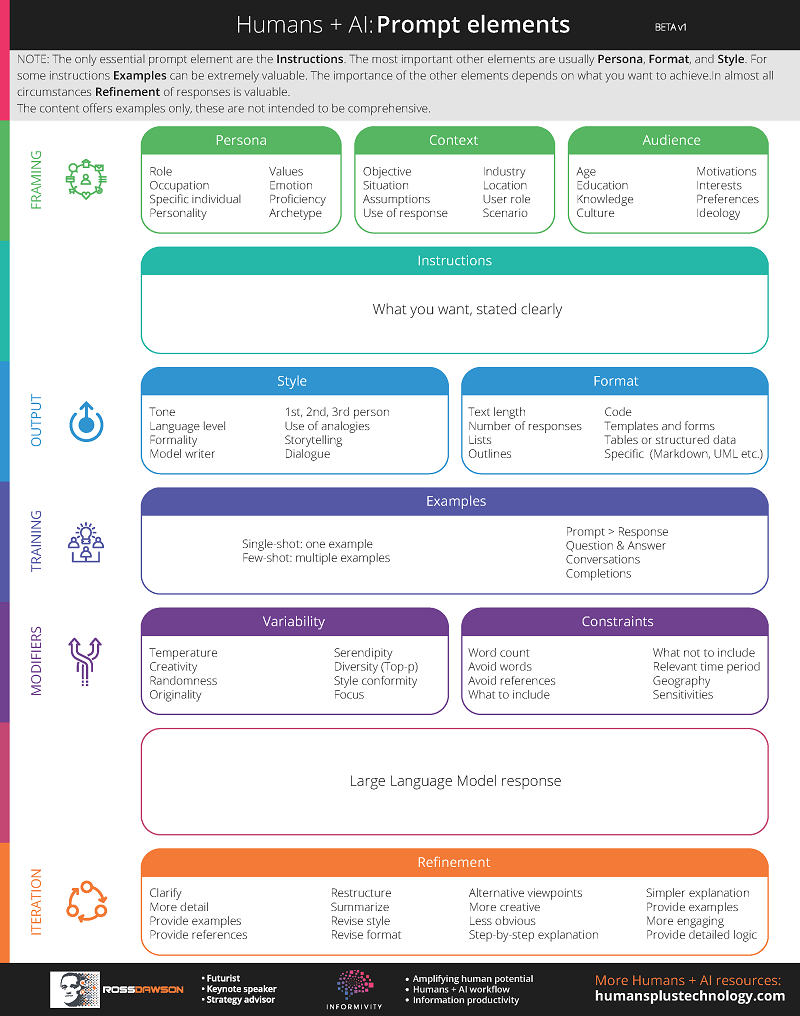Humans + AI resources > Humans + AI: Prompt Elements
Humans + AI: Prompt Elements
Deconstructing the major elements in useful prompts for Large Language Models.
Click on the image for the full size pdf.
NOTE: The only essential prompt element are the Instructions. The most important other elements are usually Persona, Format, and Style. For some instructions Examples can be extremely valuable. The importance of the other elements depends on what you want to achieve. In almost all circumstances Refinement of responses is valuable.
The content offers examples only, these are not intended to be comprehensive.
FRAMING
Persona
- Role
- Occupation
- Specific individual
- Personality
- Values
- Emotion
- Proficiency
- Archetype
Context
- Objective
- Situation
- Assumptions
- Use of response
- Industry
- Location
- User role
- Scenario
Audience
- Age
- Education
- Knowledge
- Culture
- Motivations
- Interests
- Preferences
- Ideology
Instructions
What you want, stated clearly
OUTPUT
Style
- Tone
- Language level
- Formality
- Model writer
- 1st, 2nd,3rd person
- Use of analogies
- Storytelling
- Dialogue
Format
- Text length
- Number of responses
- Lists
- Outlines
- Code
- Templates and forms
- Tables or structured data
- Specific (Markdown,UML, etc.)
TRAINING
Examples
- Single-shot: one example
- Few-shot: multiple examples
- Prompt > Response
- Question & Answer
- Conversations
- Completions
MODIFIERS
Variability
- Temperature
- Creativity
- Randomness
- Originality
- Serendipity
- Diversity (Top-p)
- Style conformity
- Focus
Constraints
- Word count
- Avoid words
- Avoid references
- What to include
- What not to include
- Relevant time period
- Geography
- Sensitivities
Large Language Model response
ITERATION
Refinement
- Clarify
- More detail
- Provide examples
- Provide references
- Restructure
- Summarize (Top-p)
- Revise style
- Revise format
- Alternative viewpoints
- More creative
- Less obvious
- Step-by-step explanation
- Simpler explanation
- Provide examples
- More engaging
- Provide detailed logic

